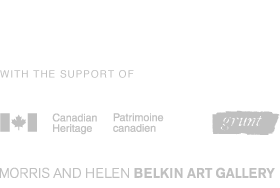Aboriginal Art in the Sixties: Fine and Popular
-
51
details
-
75
details
-
107
details
-
106
details
-
105
details
-
104
details
-
98
details
-
97
details
-
96
details
-
74
details
-
163
details
-
71
details
-
69
details
-
65
details
-
820
details
-
816
details
-
814
details
-
813
details
-
108
details
-
240
details
-
809
details
-
54
details
-
59
details
-
10
details
-
180
details
-
168
details
-
167
details
-
824
details
-
823
details
-
817
details
-
181
details
-
815
details
-
241
details
-
811
details
-
787
details
-
786
details
-
784
details
-
242
details
-
810
details
-
244
details
-
52
details
-
158
details
-
171
details
-
166
details
-
165
details
-
162
details
-
161
details
-
160
details
-
159
details
-
157
details
-
176
details
-
156
details
-
103
details
-
102
details
-
101
details
-
93
details
-
60
details
-
55
details
-
174
details
-
177
details
-
172
details
-
243
details
-
170
details
-
169
details
-
164
details
-
73
details
-
828
details
-
819
details
-
818
details
-
234
details
-
178
details
-
233
details
-
232
details
-
231
details
-
230
details
-
183
details
-
182
details
-
821
details
-
179
details
-
89
details
Young Residential School
Artists “on Display”
Early exhibits of Indian children’s “art” made in day and residential schools such as St. Michael, Inkameep, Albernie, and Coqualeetza, and in their attendant Indian Hospitals, were exhibited in public venues such as the Vancouver Art Gallery, the Pacific National Exhibition, and in Eatons and the Bay department stores. Two unusual teachers who promoted aboriginal art practice in the school system were Anthony Walsh and Rev. G.H. Raley, the Principal of the Coqualeetza Residential School from 1914 to 1934. He included in his manual training program boat building and Indian art and handicrafts: the boys learned to carve totem poles and the girls to weave baskets. By correlating industry and art, Raley believed that native communities could sustain their traditions and adapt to the modern world. (Raibmon 1996; Hawker 2003; Leeuw 2007) Walsh encouraged his Inkameep Day School students to make visual images of their culture and everyday life, and to recreate it as theatre (Andrea Walsh 2003).
In 1942, when Anthony Walsh moved to Port Alberni, he met Nuu-Chah-Nulth artist George Clutesi and supported him in continuing his cultural practices. Walsh used his connections to notable figures in the arts to encourage exhibitions of Clutesi’s paintings in galleries and museums.
St. Michael’s Residential School Art Display at the Pacific National Exposition, 1936
At the same time, aboriginal students who were encouraged to develop their art in post-secondary art schools, such as Francis Baptiste and Judith Morgan, experienced a brief period of fame and institutional recognition, which declined by the mid 60s. Baptiste returned to making a living in his own community in the rodeo and served as a political leader. Morgan got married, completed a BA, and eventually returned to Gitksan territory where she continues to paint. In the late 60s Clutesi turned from painting to teaching cultural practices at the Albernie Residential school. By the time he published his second book about Nuu-chah-nulth culture in 1969, he was so busy acting in television and working in mainstream cultural institutions that he had little time for painting.
